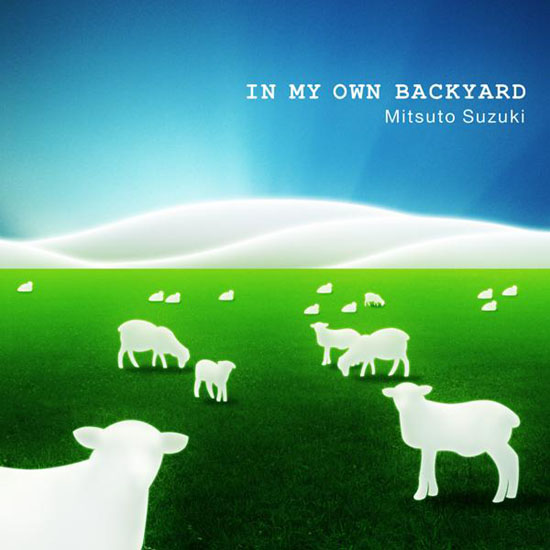A member of Square Enix’s music team, Mitsuto Suzuki is one of the true lesser-knowns, as he has yet to fully score a Square Enix game on his own. I first discovered Suzuki on a “best of battle tracks” album from Square Enix (this one). A bonus track featured Mitsuto Suzuki’s electronica arrangement of a boss battle theme from Romancing SaGa 2. And I absolutely loved it. So much techno music today turns me off instantly, but Suzuki was a master of subtle, ambient electronica. I knew that I wanted more.
I learned that Suzuki’s been around as a musician for quite some time, but under a variety of names. He was first known as ARP2600 in the mid 1990s, and he gained a sizable following in the Japanese techno scene. He formed a group called Overrocket in 1997, and a year later, he released a side project under the name “Electric Satie” (the project was a remixing of the work of French composer Erik Satie). Now at Square Enix, Suzuki-san primarily does synth and sound manipulation, though he occasionally gets a shot at music arrangement with the company as well (see above).
So I finally got around to checking out Suzuki-san’s full-length album, “In My Own Backyard,” which was released in October 2007. It’s in the same vein as that one arrangement I’d previously heard: ambient electronica, mastered to sheer aural perfection.
Okay, so the album’s not perfect. There were a few things that stood out as “negatives” in my mind. After the jump, you’ll find a detailed review of Suzuki’s solo album: In My Own Backyard.
TRACKLIST! (I get excited about tracklists…they have funny titles sometimes…)
01 Split
02 Clear
03 Common Note
04 Ephemera
05 Sound Of Dream
06 Ray
07 Language
08 Meadow
09 Jack Yourself
10 In My Own Backyard
You can learn a lot about an album merely by its track titles. And let’s start with the one that jumps out the most: track 9, “Jack Yourself.” What exactly is the message here? The song is actually one of a select few vocal tracks, and the lyrics suggest the song is about exactly what you would assume…though, in a very subtle and metaphorical way.
Personally, I really didn’t like Suzuki’s vocal tracks. They’re in English, and the delivery of the vocals are very weak. It sounds at times like an attempt to sound like Dntel (or, if you prefer, The Postal Service). But it’s hard to understand the words, and the timbre in the vocal performance is just so dull. I wished those tracks (1, 5, and 9) had remained instrumental.
The music itself is super-chill. The album title, “In My Own Backyard,” is entirely appropriate. I feel like I’ve entered some sort of pleasant, mystical dreamscape. When you’re at home on a Saturday, and you just sit outside in your backyard (assuming you have one), and you close your eyes, don’t you feel that way? Of course, in those cases, it’s nature that carries us to that euphoric state in our backyard. But in this, Mitsuto Suzuki’s backyard, it’s a completely artificial experience. Pure, precise sound waves produced to make simple, electronic music. It’s always a trippy experience, but when the artist crafting the experience knows what they’re doing, it can also be a soothing, beautiful experience.
(Interesting fact: Suzuki didn’t compose this music in his backyard, but in his bedroom instead.)
Each track on the album is of substantial length. No track falls short of four minutes, and only one track exceeds six minutes (the track time on track 1 is 6’06”). What I really enjoy about these lengthy tracks is that they never make me feel tense, but they never bore me either. There’s always something happening. It’s also interesting to experiment with your own output of the audio. You can pick up a lot of subtlety with headphones on. You can let the music overwhelm you with a full 5.1 sound system (subwoofer cranked up, of course!). Or, even coming through cheap speakers in your car, the “low-fi” experience with these strung-up patterns of sound is fantastic.
Also, props to Mitsuto Suzuki for dropping the 4/4 time signature in a few of his tracks. I lost all sense of rhythm on tracks 3 and 4, and whether this was some sort of undefined polyrhythm, or just a complex time signature that I couldn’t pick up on , the fact is that it takes guts to experiment with rhythm like this.
I’m not an avid collector of electronica, but I have a lot of admiration for people who can use the genre to create music that is both subtle and powerful, music that I can really enjoy. Unfortunately, my least favorite instrumental track from the album, “Ray,” is also the one featured on Suzuki-san’s MySpace page. This song is very busy, and it goes off the experimental deep end with harmony and tonality at different points in the track. I much prefer the softer, less grating sounds of “Clear,” “Meadow,” and the album’s title track.
If you’ve reached that point where you want to support VGM artists outside of the environment in which you were first introduced to them (namely, videogames), it may be time to start purchasing their solo albums. “In My Own Backyard” would be a great place to start. The album is available exclusively on iTunes.
Tags: Mitsuto Suzuki, Music Reviews, Reviews, Solo Album, Square Enix









































Really a great album, but pales in comparison to Neurovision. It’s awesome that Square Enix lets him put these albums out there. Hopefully there’s more on the way.
I honestly think this is the better of the two albums. To each his own.
I absolutely agree about the vocal tracks.. I always skip them when I’m listening through the album. It’s an absolutely amazing experience listening to it that way. I became a fan of his through a few remixes he did for a certain Bemani artist. I haven’t heard his other album yet, but I’ll definitely give it a listen.
Awesome site you have here but I was curious
if you knew of any message boards that cover the same topics talked about in this
article? I’d really like to be a part of group where I can get opinions
from other knowledgeable people that share the same interest.
If you have any recommendations, please let me know.
Thanks!
Very great post. I simply stumbled upon your weblog and wished to
say that I have really enjoyed browsing your weblog posts.
After all I will be subscribing to your rss feed and I’m hoping you
write again very soon!
Hi, its pleasant paragraph concerning media print, we all know media
is a wonderful source of data.
Thіs blog was… how do you ѕay it? Relevant!! Finally I’ve found something which helped me.
Thanks a lot!